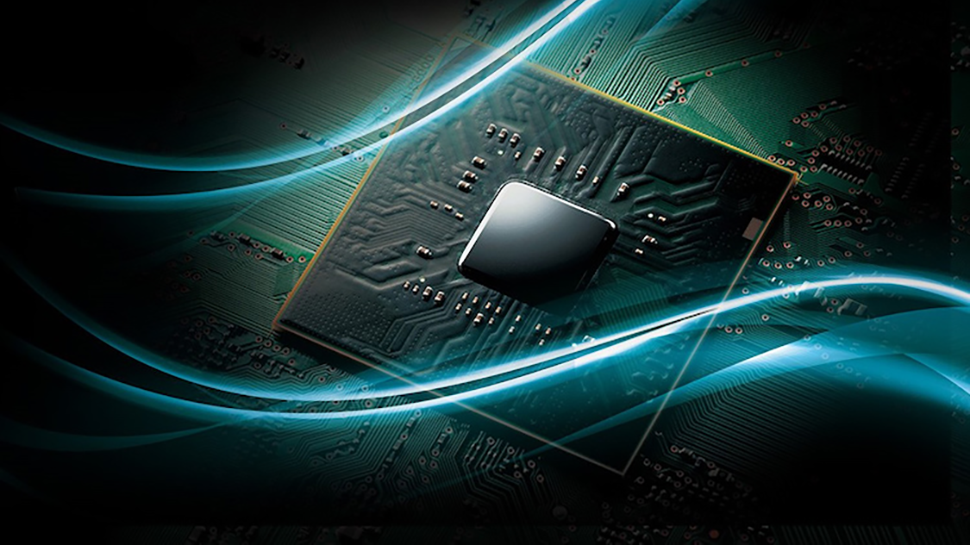Intel launched its Arrow Lake mobile product stack here at CES 2025 in Las Vegas, announcing five new Core Ultra 200H series processors for mainstream high-performance thin-and-lights, and six new Core Ultra 200HX series models for laptops. The 200H series slots in as the mainstream performance-focused portion of the company’s Core Ultra 200 series, while the 200HX models serve as desktop/workstation replacements for enthusiasts by employing the same silicon the company uses for its desktop PC processors. Intel’s previously launched Core Ultra 200V Lunar Lake processors will continue to serve as the battery life champs for Intel’s laptop silicon. However, neither of the new processor families meet the minimum AI performance requirements from the NPU to meet Microsoft’s certification for CoPilot+ PCs, leaving Lunar Lake as the company’s only CoPilot+ capable platform.
Intel’s launch comes as the company looks to staunch laptop market share losses to AMD, not to mention fending off the Arm-powered newcomers from Qualcomm, Apple, and soon, presumably, Nvidia. To solidify its position, the company has launched an extensive range of 200V, 200HX, 200U, and a dual-pronged 200H series that will power the company’s laptop portfolio into next year.

The entire Intel Core Ultra 200 series is a complicated affair with multiple different tiers and architectures, here’s a breakdown:
- Intel Core Ultra 200H: Arrow Lake mobile for mainstream segment (launching today)
- Intel Core 200H: Raptor Lake (no ‘Ultra’ in the name, launching today)
- Intel Core Ultra 200HX: Arrow Lake mobile for enthusiast/commercial (launching today)
- Intel Core Ultra 200V: Lunar Lake for low power segment (already launched)
- Intel Core Ultra 200U: Reportedly Meteor Lake Refresh*
- Intel Core Ultra 200S: Arrow Lake for desktop PCs (K-series already launched, non-K models launching today)
The Core Ultra 200H series processors with integrated graphics will launch in early Q1, and the Core Ultra 200HX series systems with discrete graphics will follow in late Q1 due to the
release timing of a new family of discrete GPUs. Intel will also launch its VPro Lunar Lake models in early Q1.
We have plenty of information to chew over below, but Intel hasn’t provided the deep-dive details of the designs or benchmarks yet. We’re attending Intel’s technical sessions later today and will update this article as needed. We also have Intel’s full product briefs with all the platform connectivity details in the final picture album in the article.
Intel Core Ultra 200H series specifications

Intel’s Core Ultra 200H series processors slot in as the mainstream mobile workhorses of the Arrow Lake family for thin-and-light laptops. The processors feature the Lion Cove P-core microarchitecture and employ Skymont for the E-cores (deep dive here). Intel claims the 200H series delivers up to 15% more performance in both single- and multi-threaded workloads over the prior-gen Meteor Lake Core Ultra 100H processors. The chips also come with Intel’s Arc GPU (with XMX) armed with eight Xe LPG+ cores for all but the lowest-end model, which has seven Xe cores. Intel says the LPG+ graphics deliver up to 15% higher performance in graphics workloads over the prior gen.
As expected, these AI-centric processors also have an in-built NPU that delivers up to 11 TOPS of performance in AI workloads, which is lower than the minimum requirement to meet Microsoft’s CoPilot+ PC spec of 40+ TOPS. That means the Intel Lunar Lake laptops remain the only CoPilot+ capable laptops in Intel’s lineup. However, the total system does have plenty of AI horsepower in aggregate, with up to 77 TOPS from the GPU contributing to a total of up to 99 platform TOPS of performance (the CPU delivers 11 TOPS).
Notably, Intel silently launched its lower-tier Raptor Lake Core 200H series processors last month. You can read the details here, but these processors come with an older architecture that isn’t as performant or power efficient as the Arrow Lake processors, yet they also fly under the same 200H series branding, but without the ‘Ultra’ moniker. These processors also all have a ‘0’ as the third digit (e.g., 270H, 250H) that indicates they use the older design, while the Arrow Lake processors have a ‘5’ (e.g., 285H, 265H). Intel’s 200U series processors reportedly feature the Meteor Lake Refresh architecture, but the company didn’t cover those processors in its press briefing.
Swipe to scroll horizontally
| Core Ultra 9 258H | 16 (6+8+2) | 16 | 5.4 / ? | 24 MB | 45 / 60-115W | DDR5-6400 / LP5x 8400 / LP5/5x CAMM2 | 96 GB (DDR5) / 64 GB (LP5/x) |
| Intel Core Ultra 9 185H* | 16 (6+8+2) | 22 | 5.1 / 3.8 | 24 MB | 45 / 115W | DDR5-5600, LPDDR/x-7467 | 64GB (LP5)/96GB (DDR5) |
| Core Ultra 7 265H | 16 (6+8+2) | 16 | 5.3 / ? | 24 MB | 28 / 60-115W | DDR5-6400 / LP5x 8400 / LP5/5x CAMM2 | 96 GB (DDR5) / 64 GB (LP5/x) |
| Intel Core Ultra 7 165H | 16 (6+8+2) | 22 | 5.0 / 3.8 | 24 MB | 64 / 115W | DDR5-5600, LPDDR/x-7467 | 64GB (LP5)/96GB (DDR5) |
| Core Ultra 7 255H | 16 (6+8+2) | 16 | 5.1 / ? | 24 MB | 28 / 60-115W | DDR5-6400 / LP5x 8400 / LP5/5x CAMM2 | 96 GB (DDR5) / 64 GB (LP5/x) |
| Intel Core Ultra 7 155H | 16 (6+8+2) | 22 | 4.8 / 3.8 | 24 MB | 64 / 115W | DDR5-5600, LPDDR/x-7467 | 64GB (LP5)/96GB (DDR5) |
| Core Ultra 5 235H | 14 (4+8+2) | 14 | 5.0 / ? | 18 MB | 28 / 60-115W | DDR5-6400 / LP5x 8400 / LP5/5x CAMM2 | 96 GB (DDR5) / 64 GB (LP5/x) |
| Intel Core Ultra 5 135H | 14 (4+8+2) | 18 | 4.6 / 3.6 | 18 MB | 64 / 115W | DDR5-5600, LPDDR/x-7467 | 64GB (LP5)/96GB (DDR5) |
| intel Core Ultra 5 225H | 16 (6+8+2) | 16 | 4.8 / ? | 18 MB | 28 / 60-115W | DDR5-6400 / LP5x 8400 / LP5/5x CAMM2 | 96 GB (DDR5) / 64 GB (LP5/x) |
| Intel Core Ultra 5 125H | 14 (4+7+2) | 18 | 4.5 / 3.6 | 18 MB | 64 / 115W | DDR5-5600, LPDDR/x-7467 | 64GB (LP5)/96GB (DDR5) |
The 200H series processors replace the outgoing Meteor Lake family. The flagship Core Ultra 9 258H wields the same number of cores – six P-cores, eight e-cores, and two low-power E-cores – as its predecessor, but it sports 16 threads, which is less than the 24 threads present on the prior-gen model. That change is due to Intel’s removal of hyperthreading from its P-cores, but the newer architecture helps offset the decreased number of threads. The 258H has a 5.4 GHz turbo boost, a 300 MHz improvement over the prior gen, and that trend carries over to the rest of the lineup, too. The power-sipping LPE-cores that debuted with Meteor Lake have also returned, but Intel hasn’t shared any clock rate details for the smaller cores yet.
The 258H processor comes with a 45W Processor Base Power (PBP) and a Maximum Turbo Power (MTP) of either 60W (28W cTDP) or 115W (45W cTDP), which varies based on the OEM configuration. The remainder of the lineup has a 28W PBP, but they also have the option of the two higher cTDP configurations. This gives OEMs the choice to use a lower 60W MTP threshold for all the processors, whereas the Meteor Lake lineup had a fixed 115W MTP.
The full lineup now supports faster memory with up to DDR5-6400 and LPDDR5x-8400 speeds, along with support for the new CAMM2 modules. However, the maximum amount of supported memory has dropped from 192GB to 96GB, though that is hardly a concern in laptops.
Intel Core Ultra 200 HX series specifications

The Core Ultra 200HX series drops in as desktop ‘replacements’ by utilizing the same chip design as Intel’s Arrow Lake Core Ultra 200S series processors, so the architectural aspects are largely identical to the Arrow Lake desktop chips. As such, they leverage the Lion Cove P-core and Skymont E-core microarchitectures. The 200HX chips are forged into a smaller BGA package to fit into a laptop, but the lower power and thermal thresholds found in laptops reduces the amount of horsepower available.
Regardless, these processors represent the highest performance you can get in a laptop from Team Blue, and they’re overclockable. The 200HX chips are meant to be paired with discrete GPUs for gaming, but Intel hasn’t shared benchmarks yet due to the timing of the next-gen dGPU launches.
Swipe to scroll horizontally
| Core Ultra 9 285HX | 24 (8+16) | 24 | 5.5 / ? | 2.8 / ? | 36 MB | 55 / 160W | DDR5-6400 / LP5x 8400 / LP5/5x CAMM2 | 96 GB (DDR5) / 64 GB (LP5/x) |
| Core Ultra 9 275HX | 24 (8+16) | 24 | 5.4 / ? | 1.9 / ? | 36 MB | 55 / 160W | DDR5-6400 / LP5x 8400 / LP5/5x CAMM2 | 96 GB (DDR5) / 64 GB (LP5/x) |
| Core i9-14900HX | 24 (8+16) | 32 | 5.8 / 2.2 | 4.1 / 1.6 | 36MB | 55 / 157W | DDR5-5600, DDR4-3200 | 192GB |
| Core Ultra 7 265HX | 20 (8+12) | 20 | 5.3 / ? | 1.9 / ? | 30 MB | 55 / 160W | DDR5-6400 / LP5x 8400 / LP5/5x CAMM2 | 96 GB (DDR5) / 64 GB (LP5/x) |
| Core Ultra 7 255HX | 20 (8+12) | 20 | 5.2 / ? | 1.85 / ? | 30 MB | 55 / 160W | DDR5-6400 / LP5x 8400 / LP5/5x CAMM2 | 96 GB (DDR5) / 64 GB (LP5/x) |
| Core i7-14700HX | 20 (8+12) | 28 | 5.5 / 2.1 | 3.9 / 1.5 | 33MB | 55 / 157W | DDR5-5600, DDR4-3200 | 192GB |
| Core i7-14650HX | 16 (8+8) | 24 | 5.2 / 2.2 | 3.7 / 1.6 | 30MB | 55 / 157W | DDR5-5600, DDR4-3200 | 192GB |
| Core Ultra 5 245HX | 14 (6+8) | 14 | 5.1 / ? | 1.9 / ? | 24 MB | 55 / 160W | DDR5-6400 / LP5x 8400 / LP5/5x CAMM2 | 96 GB (DDR5) / 64 GB (LP5/x) |
| Core Ultra 5 235HX | 14 (6+8) | 14 | 5.1 / ? | 1.8 / ? | 24 MB | 55 / 160W | DDR5-6400 / LP5x 8400 / LP5/5x CAMM2 | 96 GB (DDR5) / 64 GB (LP5/x) |
| Core i5-14500HX | 14 (6+8) | 20 | 4.9 / 2.6 | 3.5 / 1.9 | 24MB | 55 / 157W | DDR5-5600, DDR4-3200 | 192GB |
| Core i5-14450HX | 10 (6+4) | 16 | 4.8 / 2.4 | 3.5 / 1.8 | 20MB | 55 / 157W | DDR5-5600, DDR4-3200 | 192GB |
The flagship Core Ultra 9 285HX has eight P-cores and 16 E-cores, with the P-cores peaking at a 5.4 GHz boost clock and the E-cores stretching up to 2.8 GHz. Intel says the processors provide up to a 5% increase in single-thread and 20% increase in multi-threaded performance over the prior-gen Raptor Lake Refresh models. Overall, the peak P-core and E-Core clock rates have decreased by 300 MHz and 1.3 GHz, respectively. The processors have a 55W PBP, the same as last gen, but stretch up to 160W under heavy load, a minor generation increase of 3W, so the lower clock rates aren’t the result of lower overall power thresholds.
As with the 200H series processors, the 200HX chips don’t meet Microsoft’s minimum requirement of 40+ TOPS from the NPU - the NPU engine peaks at 13.1 TOPS. The systems deliver a total of 36 TOPS with the combined grunt power of the CPU, GPU and NPU, though. The chips also support integrated Thunderbolt 4 (Thunderbolt 5 is supported with a discrete chip), Wi-Fi 7 and Bluetooth 5.1. The chips also have the same improvements to memory speeds as seen with the H-series models.
Intel’s extensive portfolio of new laptop chips cover the entire spectrum of the laptop market, but the company hasn’t yet shared the architectural details of its high-volume 200H series parts. We’re attending Intel’s sessions today and will update this article with new information as necessary.


 1 week ago
10
1 week ago
10









 English (US) ·
English (US) ·